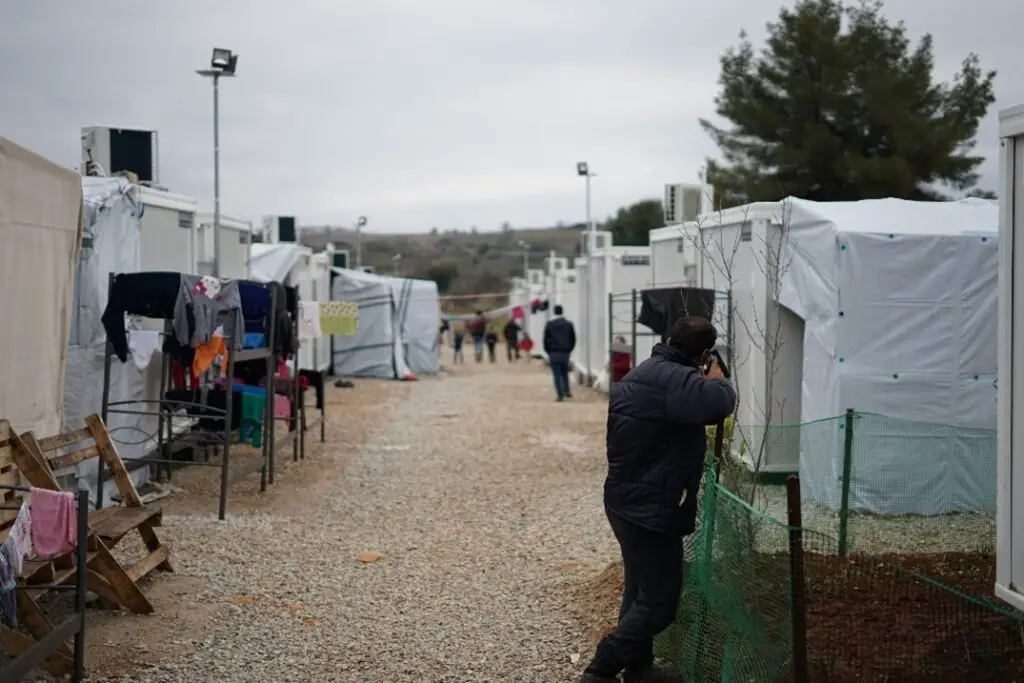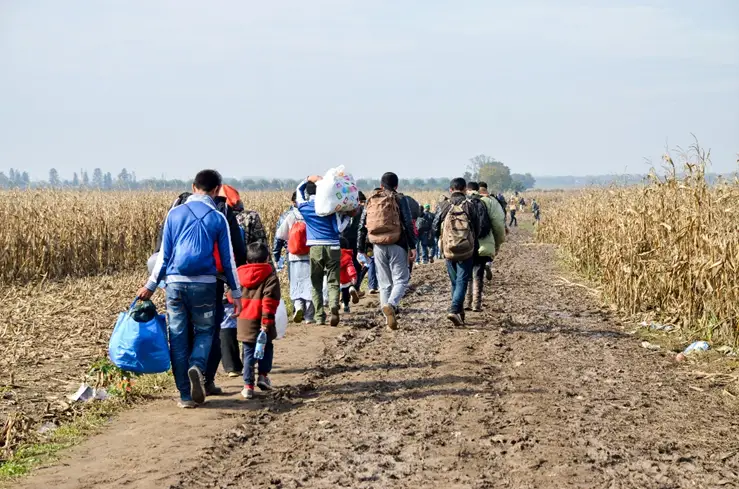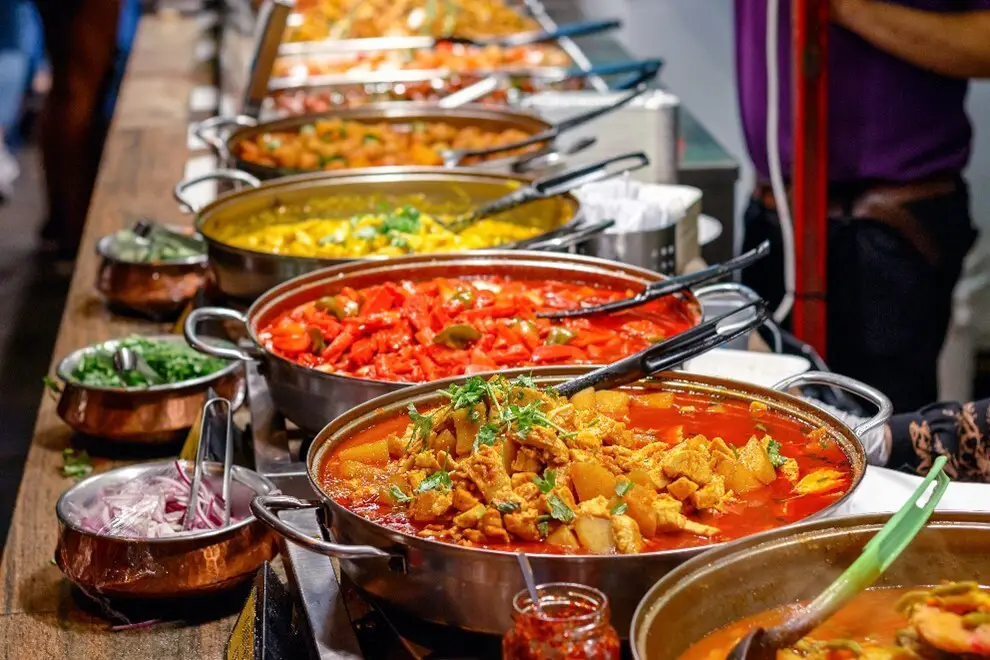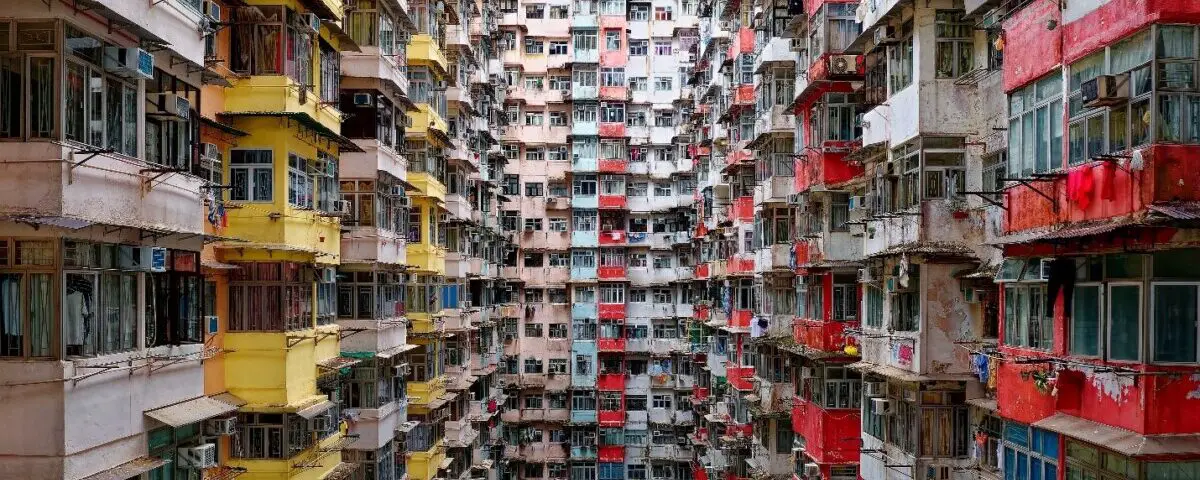Migration and population have a profound impact on the world as migration increases and populations grow. They shape our society, culture, and economy in ways that are often difficult to understand. From the bustling metropolises of the developed world to the underprivileged villages of the developing world, migration and population are ubiquitous forces that influence every aspect of our existence. But what makes them so significant? And how do they interact with each other?
What are the environmental effects of migration and population and their impact? This article explores the question. It examines the complex relationship between migration and population growth and sheds light on one of the most pressing issues of our time.
So, prepare for a journey that will take you from the lofty halls of academia to the dusty roads of the world’s most destitute regions. This is a tale of how migration and population shape our world in ways beyond imagination.
Migration
Migration is the act of humans and animals moving from one location to another for a short or an extended period. We should all be familiar with the wildebeest migration.
The annual migration northwest, at the end of the rainy season (usually in May or June) is recognized as one of the “Seven Wonders of the Natural World.”
National Geographic.
Migration can be voluntary or forced, as in the case of the wildebeest, and can be within a country or across international borders.
According to the UNHCR, approximately 1 in 30 people live outside their country of origin. That’s more than a quarter of a billion of the world’s population – greater than at any other time in history. And in 2023 the number was rising.
Reasons for Migrating.

The reasons humans migrate are manifold and diverse. We have been on the move since our early ancestors went in search of resources and better climes.
Today, we migrate for Push and Pull reasons which are usually;
- economically,
- politically, or
- environmentally driven.
Push factors
Push factors are those that push a person out of their own country, whether it be because of:
- Persecution,
- War,
- Environmental disasters, or
- Human rights violations.
Pull factors
Pull factors are what draw a person to a different country, typically:
- Economic opportunities,
- Political freedoms, or
- Family reunification.
The COVID 19 pandemic slowed the pace of migration, but since 2022, there has been a renewed increase, as people move:
- for work,
- for education,
- to escape persecution,
- or to seek a safer and better life for themselves and their children.
Is there a difference between a Migrant and a Refugee?
There is a big difference between a migrant and a refugee.
Refugees

A refugee is a person forced to move from their country of origin. They seek asylum for themselves and their families as they escape conflict or persecution. They are protected by international law and should not be returned to places where their lives may be in danger.
The growing influx of refugees has a substantial impact on their countries of origin and the countries they seek refuge in.
Migrants
A migrant, on the other hand, chooses to move to a new area, mainly to improve their work or living situation. They may be in search of better educational opportunities or to reunite with family members.
The distinction between a migrant and a refugee is sometimes blurred. But it shouldn’t be. The distinction is important when it comes to government policies. By law, governments are required to help protect asylum seekers, so classifying a refugee as a migrant can have serious adverse consequences for refugees.
Economic factors
Economic factors are one of the primary reasons for modern migration, as many people seek better job prospects and higher wages. Most younger migrants go to high income countries where work opportunities are greater. Whereas older migrants may move to warmer countries to retire, where the cost of living is less.
Oil producing countries such as Saudi Arabia attract many migrants looking for temporary work. A few of the most popular migrant destinations are the US, followed by Germany, Saudi Arabia, Russia, and the UK.
Political factors
Political factors such as:
- war,
- violent uprisings,
- persecution, and
- other human rights violations,
force people to flee their homes and seek refuge in other countries.
In 2020, there were 82.4 million forcibly displaced people in the world, including refugees and asylum-seekers. Refugee camps are temporary solutions that offer assistance and protection to people fleeing their homes. They provide food, clean water, shelter, medicine and sometimes, education.

The vast majority of refugees are hosted by developing countries, with some of the largest refugee camps in the world found in:
- Bangladesh
- Turkey
- Colombia
- Pakistan
- Kenya
- The Sudan.
Of the 82 million refugees forced to leave their homes, only 0.3% returned to their countries of origin. This massive displacement of population has a considerable impact on the countries who received the refugees as well as the countries they left.
Environmental factors
Environmental factors influence migration in many ways. Increasing temperatures and climate-induced extreme weather events, rainfall irregularities, and rising sea levels, contribute to growing unrest and competition for resources.
Extreme weather events include:
- Hurricanes,
- Cyclones,
- Wildfires,
- Droughts,
- Floods,
- Heatwaves,
- Tornadoes, and
- Landslides.
The events result in:
- Destroyed crops,
- Destroyed homes,
- Dead livestock,
- Contaminated water sources,
- Increase in diseases, and
- Conflict over resources and land rights.
By 2050, climate change is expected to displace between 25 million to 1 billion people worldwide.
Effects of migration
The cultural, economic, social, and environmental effects of migration throughout human history have shaped societies.
Cultural changes

Migration can contribute positively through:.
- cultural diversity,
- new cuisine,
- forms of art,
- music, and
- literature.
However, cultural differences can lead to:
- tension,
- conflict, and
- economic inequalities.
Despite these challenges, the development of languages, morals, religious beliefs, agriculture, cuisine, and even laws are the positive result of migration.
Economic changes
Through travel and migration, conflict, exploration, resource-seeking, and missionary activities have all played a significant role in shaping the world.
Early explorers moved to uncharted territories in search of natural resources. Wherever there was potential for logging, hunting for fur, or mining minerals, towns sprung up. With the creation of urban communities comes more people looking for business opportunities. The arrival of more people means more food and housing is required. This again brings more people to take up the jobs needed to produce commodities. Before you know it, the snowball effect has created a thriving economy in recipient countries.
Migrants fill labour shortages in various sectors such as construction, manufacturing, and agriculture. And they bring skills and expertise that are in high demand, such as in healthcare and hospitality. They contribute to economic growth and pay taxes that support public services.
Conversely, migration contributes to the economies of the original countries of migrants. In 2020, migrant workers sent an estimated $554 billion to their home countries. Much-needed benefit to many families and communities.
However, migration can also bring economic challenges. Increased competition for jobs and public resources can contribute to income inequality and exploitation of migrant workers.
Social changes
Migration brings about social changes that affect both migrant communities and the communities they settle in. Discrimination and social exclusion can be challenging for migrants, especially those from different cultural or ethnic backgrounds. However, migration can also cultivate greater social cohesion, by creating new networks and communities.
Within recipient countries, there will always be debates and opposing views on the impact of migrants. But it’s important to recognise the downside for countries whose citizens depart. One example is the so-called Brain Drain, in which skilled individuals seek better opportunities elsewhere.
This can impact negatively on those countries. But we should not forget how many who acquire skills overseas return and use their new found expertise to benefit their homeland.
Immigrants also play an enormous role in the success and innovation of their new country. There are far more immigrant Nobel Laureates, National Academy of Science members, and Academy Award film directors than you would expect, based on the immigrant share of the population. Immigrants also make up over half of Silicon Valley start-ups and over half of the number of patents.
Population
Population refers to the total number of people living in a particular area or country. The act of population indicates the processes that lead to changes in the size and composition of a population, including births, deaths, and migration.
Growth
It took;
- thousands of years for the world population to reach 1 billion by 1800,
- then just 130 years to reach 2 billion, and
- another 30 years to 3 billion.
As we reached 2023, the world population stood at 8 billion, increasing at a rate around 67 million people every year.
While some regions or countries experienced overpopulation, the global population was not yet at unsustainable levels. Overpopulation occurs in urban areas with two thirds of the world population concentrated in Asia and Europe.
Extreme climates and regions lacking fresh water, good soil, and natural resources, are typically less populated and receive the lowest number of immigrants.
However, advancement in technology has given us the ability to modify our environment, expanding the possible places where people can live. This development brings about its own set of challenges as we strive to create more habitable environments.
Factors affecting Population Growth.
Population growth is dependent on many factors besides migration, such as fertility and mortality rates. Differences in life expectancy, access to healthcare, and social and economic factors such as education and income also affect population growth.
Fertility rates
Fertility rates refer to the number of births per woman in a particular population. They vary widely across countries and regions, with some countries having higher fertility rates and others lower fertility rates. Factors that affect fertility rates include:
- Access to education
- Access to healthcare and contraception
- Cultural and social norms
- Economic factors such as the cost of raising children.
Mortality rates
Mortality rates refer to the number of deaths per 1,000 people in a particular population. And they are affected by a range of factors, including:
- Access to healthcare,
- Nutrition,
- Clean water, and
- Environmental factors, such as pollution and natural disasters.
Improvements in healthcare, sanitation, and living conditions have led to a notable reduction in mortality rates in many parts of the world.
Migration
Migration affects population growth, leading to demographic changes in both the sending and receiving countries, such as changes in age structure or ethnic and cultural diversity.
Effects of Population expansion
Environmental impact
Population expansion can have a negative impact on environments, such as:
- deforestation,
- habitat loss,
- soil erosion, and
- pollution.
The environmental effects of population expansion and migration depend on factors such as:
- the size of the population,
- the level of development in the region, and
- the ecological footprint of the inhabitants.
Some of the environmental effects of migration and population expansion are:
Land-use
More land must be cleared to build homes and infrastructure, leading to deforestation, habitat fragmentation, and loss of biodiversity.
Resource Consumption
An increase in the demand for resources like food, water, and energy puts pressure on the local environment and natural resources.
Pollution and climate change
A growing amount of waste and pollution. The countries with the most amounts of emissions are countries whose economies rely on heavy industries. The transportation required to move people and goods also increases the amount of greenhouse gas emissions, thereby impacting climate change.
Economic impact
Population expansion can have both a positive and negative economic impact. In some cases, a growing population can stimulate economic growth and development, as more people create demand for more goods and services.
However, population growth can also lead to increased competition for jobs, as well as increased demand for social services such as healthcare, education, and housing.
Social impact
Migration and population continue to expand at a rapid rate. Growth in urbanisation increases, as people move to cities in search of jobs and opportunities.
This can lead to overcrowding, lack of affordable housing, and an increase in crime. Population growth is closely linked to issues of social justice and equity, as the impacts of population expansion often exacerbate existing inequalities.
The Intersection of Migration and Population
Migration and population are closely interlinked.
The relationship between Migration and Population
Changes in population drive migration patterns, and an increase in migration decreases population.
Population growth and decline create economic, social, and political conditions that push people to move and find better opportunities or flee from conflict, poverty, and environmental disasters.
Immigration can lead to an increase in population, contributing to cultural diversity and demographic changes, while emigration can result in a population decrease, particularly in countries with low birth rates and aging populations.
The Chinese Belt and Road Initiative (BRI) is expected to have a significant impact on world demographics, as it involves infrastructure development and investment in over 100 countries. This will potentially stimulate economic growth, urbanisation, and migration flows.
Cultural diversity is likely to increase as more people move across borders and interact with different cultures. However, the long-term demographic effects of the BRI remain uncertain and will depend on various factors such as economic development, political stability, and social integration.

Case studies on the Intersection of Migration and Population
There is a complex relationship between migration and population. Case studies on this intersection show the consequential impacts that migration can have on both individuals and communities.
Mass migrations and the way they have altered populations around the world, have occurred many times in many places throughout history. They have changed the face of the planet in hundreds of ways.
Mass migration experienced a surge during the 19th century when transportation became faster, cheaper, and more convenient.
Let’s look at a few of the most significant case studies that have taken place in the last 200 years and what motivated the migrations.
The Gold Rushes
The Gold Rushes of Australia and California in the 19th century changed the population and gender demographics in those regions considerably. The population of Australia more than tripled from 430,000 In 1851 to 1.7 million by 1871.
California before the Gold Rush had 16,000 people, most of whom were Native Americans. In 1848, 300,000 people from Europe, China and other parts of the US came hoping to strike it rich.
Once the gold had run out, many of these gold seekers stayed and created towns and thriving communities in the newly populated areas.
The Italian Diaspora
Italian mass migration happened many times, with the most significant between the 1880s and 1930s, and again in the 1950s to 1970s. It is estimated that by 1980, more than 25 million Italians were living outside Italy. Largely due to the crippling poverty in their country during the early 20th century, especially in the south, many left to find new opportunities in North and South America, Australia, and other European countries.
The Irish Migration
One of the greatest mass migrations from Ireland occurred during the Great Potato Famine of the 1840s. Half the country’s population left Ireland during the mid-19th century to live in North America, Great Britain, and Australia. This left a massive shortage of people which had a long-lasting impact on the country’s economy, social structure, and cultural identity.
Native Americans and the Trail of Tears
With the colonisation of America came the displacement of hundreds of thousands of Native Americans who were forced to cede their lands in 19th century. The Indian Removal Act of 1830 relocated thousands of tribes from their ancestral homes to place them in Western lands considered undesirable for white man. Referred to as the ‘Trail of Tears’, an estimated 100,000 Native Americans were forced to migrate, with many dying en route.
The Great Migration of African Americans. (1910 – 1970)
In an effort to escape the harsh Jim Crow Laws and fierce discrimination in the South, many Black Americans migrated to the North and West of the country. An estimated 6 million African Americans relocated. And the migration sparked major social changes within the United States, most notably, the Civil Rights Movement.
World War II
War is a recurring reason for migration, and the Second World War saw 12 million people displaced from central Europe. Many of these migrants were refugees forced to flee their homes due to persecution by the Nazis, and millions more migrated in the aftermath of the war.
Partition of India and Pakistan
The Partition of India and Pakistan in 1947 was one of the largest mass migrations in human history. The partition of the British Indian Empire into India and Pakistan forced the migration of millions of people across the newly created border.
An estimated 14 million people were displaced, with Hindus and Sikhs in Pakistan being encouraged to move to India and Muslims in India being encouraged to move to Pakistan.
This forced migration led to long-lasting political, social, and economic effects on both countries, and has fuelled longstanding tensions between India and Pakistan.
Modern Times
Migration continues to play a major part in the changing social, economic and cultural structures around the world. Conflict and poverty remain the principal factors behind migration and population.
Syrian Refugee Crisis
The 21st century conflict in Syria led to one of the largest refugee crises in modern history, with millions of Syrians fleeing their homes to seek safety and stability in other countries.
The influx of Syrian refugees has had significant impacts on the populations of neighbouring countries such as Lebanon, Jordan, and Turkey, which have taken in large numbers of refugees.
Mexican Immigration to the United States
Tens of thousands of Mexicans migrate every year to the United States in search of economic opportunities. The large number of Mexican immigrants in the United States has led to changes in the population composition and age structure. Many migrants find work in the agricultural, construction and hospitality sectors.
Photo: Humberto Chavez/Unsplash. Mexico/US border
Ukrainian Migration
Political instability and conflict in Ukraine, particularly in the eastern regions of the country, were the driving force behind this migration. Many Ukrainians migrated to neighbouring countries such as Poland and Belarus. Others to Western Europe, particularly Germany, Italy, and the UK.
The migration of Ukrainians has created changes in the population demographics as many young and working-aged people left the country. This impacted the labour market and the economy, as businesses struggle to find skilled workers, slowing potential economic growth. It has also affected the population and economy of destination countries.
Refugee Crises in South Sudan, Nigeria and West Africa
The conflict in South Sudan led to one of the largest refugee crises in Africa, with millions of South Sudanese fleeing to neighbouring countries, Uganda, Kenya, and Ethiopia.
21st century Nigeria experienced significant internal migration, particularly from rural to urban areas. This led to significant population growth and urbanisation in Lagos and Abuja, as well as challenges related to infrastructure and social services. But it also created economic opportunities, especially in the informal sector.
The Ebola outbreak that occurred in West Africa in 2014-2016 led to population displacement when people fled affected areas in search of safety and healthcare.
The response to the outbreak also led to restrictions on movement and migration, particularly across national borders.
Photo: Daniel Mensah Boafo/Unsplash. Construction workers in Ghana.
Final Thoughts
As you can see, migration is not a new phenomenon. Its impact has always been part of human development, as people cross borders for a variety of reasons. And there may come a day when there are no international borders and people are free to move around and live wherever they wish without restriction. How we deal with potential challenges presented by migration is an ongoing discussion.
But one thing is certain – migrants have had a profound impact on the countries and cultures they move to. They bring with them new ideas, traditions, culinary delights, and new perspectives, thereby enriching the societies they join.
As we continue to navigate the complexities of migration, it is important to recognise and celebrate the contributions of those who migrate to new shores seeking a better life.
Migration and Population are interconnected and have had an immense influence on the world’s development. Each has a significant effect on the other in ways that are intricate and far-reaching. From cultural transformation to environmental repercussions, many factors shape the world in ways that are positive and negative.
If we aspire to create a better world, we cannot disregard the realities of migration and population. By working together to understand these forces, we can move towards a brighter future, one that embodies equality, sustainability, and empathy.
The importance of understanding how migration and population impact each other in a world already out of balance cannot be overstated.
FAQs
Q: What is the difference between migration and population expansion?
A: Migration refers to the movement of people from one place to another, while population growth refers to an increase in the number of people living in a particular area.
Q: How does migration impact society?
A: Migration has a significant impact on society by bringing cultural, economic, and social changes to the areas that people migrate to.
Q: What are the environmental consequences of population expansion?
A: An explosion in population growth can lead to environmental degradation by putting pressure on natural resources, increasing pollution levels, and contributing to climate change.
Q: What can we do to address the challenges posed by migration and rapid increases in population?
A: To address these challenges, we need to invest in sustainable development, support policies that promote equity and social justice, and prioritise efforts to mitigate the impact of climate change.
Q: Why is it essential to understand migration and population?
A: Understanding these forces is crucial because they have a profound impact on our world, shaping our society, culture, and economy in ways that are often difficult to comprehend. By understanding migration and population, we can work towards creating a more just and equitable world for all.

